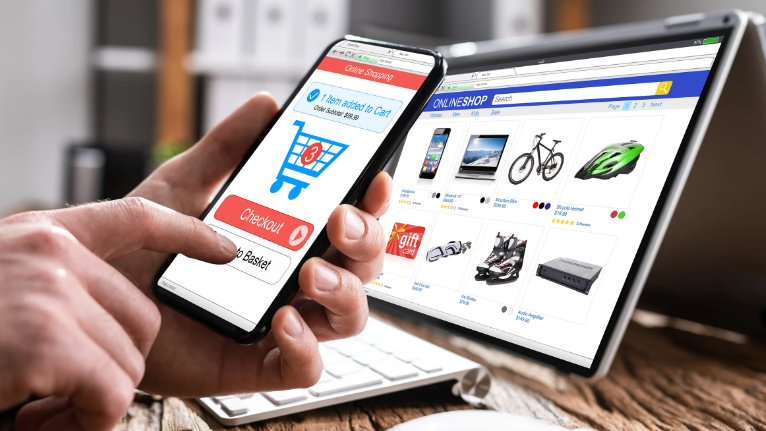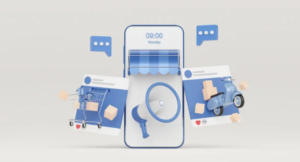
Ecommerce Personalization Tools – How to Tailor Shopping Experience to Your Customers?
Customers are bombarded with endless options and constant advertisements in today’s fast-paced digital world. As such, cutting through the noise and standing out from the competition has become more challenging than ever for ecommerce businesses. To succeed in this competitive environment, companies must discover unique ways to engage their audience and provide exceptional shopping experiences that set them apart from their rivals.
One proven tactic that has emerged as a game-changer in the online retail space is personalization. By tailoring the shopping experience to each customer’s preferences, ecommerce sites can convert casual visitors into loyal patrons. By understanding and harnessing the power of these tools, ecommerce businesses can unlock new opportunities for growth and thrive in an increasingly competitive market.
This article will delve into the world of ecommerce personalization tools, examining how these innovative solutions enable businesses to create a customized experience for their customers.
Why Personalization Matters in Ecommerce?

The significance of personalization in the realm of ecommerce is paramount. In an age where customers are inundated with countless options, personalization emerges as a key differentiator that can give businesses a competitive edge.
Numerous studies have demonstrated that an online shopping experience tailored to individual preferences results in higher conversion rates, enhanced customer satisfaction, and long-term loyalty. These factors contribute to the overall success and growth of a business.
For instance, McKinsey research shows that “personalization most often drives from 10% to 15% revenue lift (with company-specific lift spanning from 5% to 25%, driven by sector and ability to execute). The more skilful a company becomes in applying data to grow customer knowledge and intimacy, the greater the returns.”
Furthermore, 71% of consumers expect companies to deliver personalized interactions.
With personalization, businesses can target specific customer segments, ensuring they present relevant offers to their audience. Let’s take a look, for instance, at the development of an Amazon pricing strategy: expert insights and tips suggest considering not only the competitors’ pricing strategies but also identifying your target customer, their expectations about your product or service, as well as their purchasing behavior.
Adhering to these factors will help you come up with a winning pricing strategy and even make them come back for more. Ultimately, this results in a more efficient use of marketing resources and a better return on investment — companies that grow faster drive 40% more of their revenue from personalization than their slower-growing counterparts.
Moreover, personalization allows ecommerce businesses to forge stronger connections with their customers. By understanding and catering to individual preferences, businesses can create meaningful interactions that go beyond mere transactions. These personalized experiences make customers feel valued and understood, cultivating long-lasting relationships that ultimately benefit both parties.
Customer Data Collection and Analysis

To effectively personalize the shopping experience, businesses must first collect and analyze data on their customers’ behavior. This process typically involves tracking user activity on an ecommerce site and gathering information about browsing history, purchase patterns, and product preferences.
There are numerous tools available for data collection and analysis, including Google Analytics, Hotjar, and Kissmetrics.
Once the data is collected, it can be used to segment customers based on factors such as demographics, geographic location, and behavioral patterns. These segments can be targeted with personalized content that specifically appeals to their interests.
Product Recommendations and Personalized Promotions
Product recommendations are one of the most powerful personalization tools at an ecommerce business’s disposal. By analyzing customer data and using machine learning algorithms, businesses can suggest products that are most likely to appeal to individual shoppers. Popular tools for generating leads include Salesforce, Yusp, and Personyze.
In addition to product recommendations, personalized promotions are another way ecommerce sites can engage their audience. Offering deals or discounts tailored specifically to a customer’s tastes can go a long way in encouraging repeat purchases.
Email Marketing and Retargeting
Email marketing remains an essential tool for ecommerce personalization. With the right strategy in place, personalized emails can drive conversions by delivering targeted content directly to customers’ inboxes.
Email marketing software solutions like MailChimp and Drip offer advanced segmentation features that enable businesses to send highly relevant emails based on factors such as purchase history or abandoned cart items.
Retargeting ads are another effective means of personalizing the shopping experience for customers who have previously visited your site but did not make a purchase. By displaying ads featuring products they’ve shown interest in across social media platforms or other websites they visit, you can encourage them to return to your store.
Chatbots and Customer Support

Chatbots are quickly becoming indispensable tools for ecommerce businesses looking to enhance their customer support while providing personalized assistance.
These AI-powered virtual assistants can answer frequently asked questions, help users navigate the site, or even recommend products based on customer preferences. Platforms like Chatfuel and TARS allow businesses to create chatbots without any coding knowledge.
Offering personalized customer support is another way ecommerce businesses can differentiate themselves from competitors. A quick response time combined with tailored solutions will often result in a satisfied customer who is more likely to remain loyal.
Conclusion
Ecommerce personalization is no longer just a luxury; it cannot be ignored or underestimated. It has become a necessity for businesses seeking long-term success in an increasingly competitive online landscape.
By embracing this approach and implementing strategies that focus on individual customer preferences, businesses can set themselves apart from competitors, optimize their marketing campaigns, and forge lasting bonds with their clientele.
For instance, by leveraging the power of data collection and analysis tools alongside personalization strategies — product recommendations, email marketing campaigns, retargeting ads, chatbots, and attentive customer support — ecommerce sites can effectively tailor the shopping experience for each customer.
The result? Happier customers who feel valued and understood lead to increased profitability for your business!
Author Profile

- Blogger by Passion | Contributor to many Business and Marketing Blogs in the United Kingdom | Fascinated with SEO and digital marketing and latest tech innovations |
Latest entries
 Digital MarketingApril 11, 2025Digital Marketing Tactics That Generated £1M in Revenue for UK Retailers
Digital MarketingApril 11, 2025Digital Marketing Tactics That Generated £1M in Revenue for UK Retailers Web DesignApril 11, 2025UK Digital Trends: Top Website Building Solutions for 2025
Web DesignApril 11, 2025UK Digital Trends: Top Website Building Solutions for 2025 TechnologyMarch 31, 2025The Future of Text-to-Speech: Transforming Communication in Healthcare
TechnologyMarch 31, 2025The Future of Text-to-Speech: Transforming Communication in Healthcare TechnologyMarch 28, 2025Top-Rated Tools Every Modern Recruiter Needs in Their Toolkit
TechnologyMarch 28, 2025Top-Rated Tools Every Modern Recruiter Needs in Their Toolkit

